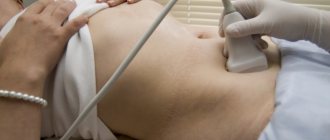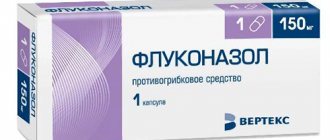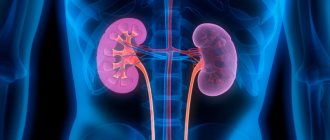Cystitis is a disease associated with inflammation of the mucous membrane and tissues of the bladder. In most cases it has a long course.
Often, the infection can be in the body in an inactive state (resting state), but as soon as you become hypothermic or weaken your immune system, cystitis immediately makes itself felt.
According to statistics, women are more often affected by the disease. Every second girl felt the following symptoms:
- burning or pain when urinating;
- discomfort in the lower abdomen.
As mentioned above, one of the main factors of this disease is hypothermia. This gave rise to the opinion that it can be cured independently by heating. Of course, heat for cystitis can ease the symptoms of the disease, but you can only get rid of the disease with the help of drug therapy, which is carried out under the supervision of the attending physician.
If we talk specifically about methods that speed up recovery and cause relief of symptoms, then a hot bath for cystitis is one of the most effective and efficient methods.
Does heat relieve pain in cystitis?
When the bladder becomes infected, colonies of pathogens attach to the walls of the organ, causing spasms of smooth muscles. The process is accompanied by incessant pain in the lower abdomen. Treatment of cystitis should be comprehensive: antibiotics, diuretics, mycoseptics, antispasmodics.
In order not to overload the systemic bloodstream with the breakdown products of medications, spasms of the urethra and bladder can be relaxed by local heating of the problem area. If the inflammation is caused by simple hypothermia, you can take a bath at a comfortable temperature (about 37.5 ° C) - this will help you relax and forget about the pain.
Such procedures have a beneficial effect on the entire body due to the ingredients that are used during heating. Medicinal supplements of natural origin speed up the healing process, enhance the effectiveness of medications, and consolidate the results of drug treatment.
Collections of medicinal plants that are used for baths have analgesic, antimicrobial, relaxing, and disinfecting effects. These are valerian, aspen, chamomile, St. John's wort and others. Alternating herbal infusions added to the bath increases the effectiveness of treatment.
When should you not take heat?
You should not take a bath, steam in a sauna or shower with hot water if you have cystitis in the following cases:
- Stage of development of the disease. If acute cystitis has just begun to form, then exposure to heat can significantly accelerate the development of microorganisms.
- Hemorrhagic cystitis. With this form of the disease, bleeding may increase.
- Concomitant pathology of the cardiovascular system. Hypertension occupies a special place among the pathologies of this group. Vasodilation can lead to exacerbations such as hemorrhagic stroke or hemorrhages in other organs.
In such cases, the effect of applying heat will be negative. It is worth noting that the active form of the infectious process is the main contraindication to thermal treatment methods. Thermostat conditions are created in the bladder, that is, a moist and warm environment.
In addition, due to the inflammatory process, it is possible to release protein structures from the affected walls of the bladder, which will serve as a breeding ground for the microorganism; thus, with this pathology, heat accelerates the process of reproduction and development of bacteria by half.
In addition to the fact that this treatment method creates favorable conditions for microorganisms, it also causes vasodilation. As a result of this, the permeability of their walls increases significantly. Microorganisms are able to enter the bloodstream and cause distant septic processes within the body; with this route of infection, the appearance of subdiaphragmatic, hepatic, and interloop intestinal abscesses becomes possible.
Is a hot bath beneficial?
Is it possible to take a hot bath with cystitis? Increasing the temperature of the bath water will only complicate the situation. Even if the spasm passes after such warming up and the condition improves, increased blood flow contributes to the progression of the infection along the ascending line, involving the kidneys in the inflammatory process. This is dangerous due to such a serious complication as pyelonephritis.
Visiting a bathhouse or sauna provides a similar effect: for some time, your health may improve, but such warming up does not fully solve the problem of cystitis.
Symptoms
Typically, cystitis is indicated by a frequent urge to urinate and a feeling of an incompletely emptied bladder. In addition, symptoms include:
If at least 2-3 of the listed symptoms appear, you should immediately consult a doctor. If the manifestations are ignored, the woman may develop chronic cystitis, the symptoms and treatment of which are somewhat different from the acute (initial) one.
Types of baths used for bladder inflammation
For cystitis, you can take a lying, sitz or foot bath. The amount of medicinal additives depends on the type of bath and the volume of water.
Warming up your feet
If there are no contraindications such as varicose veins, then in this version of warming up the temperature can be increased. This will help increase blood flow in the lower part of the body - local warming of the legs does not contribute to the spread of pathogenic microflora. To enhance the effect, add herbal infusion or mustard powder to the water.
The effect of the procedure on the body
A hot bath has positive and negative sides not only during inflammatory processes, but also in everyday life. In addition, you need to know how to properly take water procedures.
Positive Impact:
- While taking a bath, the pores open and it becomes easier to cleanse the skin of impurities.
- Warm water helps you relax and relieve stress. Fatigue goes away after physical activity and a day of work.
- After physical exercise, muscle pain and tension are relieved.
- A warm bath is a great way to warm up during the cold season.
Negative Impact:
Recommended topic:
Drops for cystitis
- A hot bath puts stress on the heart muscle.
- The skin becomes dry and the aging process develops faster.
- With vascular hypotension, under the influence of hot water, a decrease in blood pressure occurs.
- During pregnancy, a hot bath increases the risk of miscarriage. Before the birth of a child, a woman is only recommended to take a hygienic shower.
The benefits of a bath are obtained if you take it correctly. You cannot lie in it so that the water covers your chest. Take a comfortable position to relax your muscles, place a special cushion or towel under your head. After a therapeutic bath, you should not rinse with water from the shower; you just need to blot your skin with a towel.
How to take a bath properly
In order for the procedure to create a favorable effect, it is important to strictly follow all the rules:
- Monitor the optimal water temperature - up to 37.5 ° C;
- You should take a bath in a warm room and in a calm, relaxed state;
- When warming up, a sitting position is preferable;
- It is useful to add mustard, soda solution, herbal decoctions or simply dried medicinal plants to bath water;
- After warming up, you should not overcool, go outside or do heavy physical work;
- Keep track of the time: 10-15 minutes are enough to take a bath; in the future, the water will cool, creating the opposite effect;
- The time for warming up is agreed upon with the doctor individually, the best option is before bedtime in order to rest in bed, prolonging the therapeutic effect, and to prevent hypothermia;
- The frequency of taking baths for cystitis is 3-4 times a day, if there are no contraindications and there are conditions for bed rest;
- After the procedures, you cannot take a regular bath or shower, even a hygienic one: skin soaked in herbal infusion continues to receive a healing effect;
- The course of treatment with warming baths lasts up to 10 days on average.
After the procedure, urologists recommend urinating without leaving the bath so that active substances can better penetrate the urethra.
It is better to choose a plastic or enamel container for baths. Other types of metal can come into contact with the active components of supplements, creating compounds harmful to the body.
Drug treatment of cystitis
Thermal procedures have a good effect in eliminating the symptoms of the disease. They eliminate pain, burning and spasms, but cannot fully fight the cause of the disease - microorganisms.
Therefore, if the above symptoms do not leave the patient within one to two days, you should seek help from a specialist. After the examination, the doctor will prescribe treatment aimed at eliminating the causative agent of cystitis.
You should undergo examinations such as a general urine test, a Nechiporenko urine test, a general blood test and urine culture for sterility and sensitivity to antibiotics.
The most common causative agent of cystitis is Escherichia coli. It is a permanent resident of the adult intestine, and due to the peculiarities of the anatomical structures, it easily enters the urethra and urinary tract, causing infectious and inflammatory diseases.
In addition to it, cystitis can be caused by:
- staphylococcus;
- streptococcus;
- Klebsiella;
- Pseudomonas aeruginosa;
- Proteus;
- enterobacteria;
- mushrooms of the genus Candida;
- chlamydia;
- mycoplasma.
After determining the cause of the disease, it is necessary to decide on the choice of drug. It is worth remembering that independent, uncontrolled use of antibiotics, uroantiseptics and antifungal drugs can only lead to “healing” of the disease and its transition to a chronic condition. After all, each drug has its own indications and range of action.
It is forbidden to take diuretic medications, such as furosemide, if the bladder is inflamed.
The following drugs are effective in combating cystitis pathogens:
- Furazolidone.
- Ciprofloxacin.
- Monural.
- Nitroxoline.
- Nevigramon.
- Urolesan.
Who are contraindicated for warming baths?
Even if all recommendations are strictly followed, not everyone can warm up in the bathroom. Among the main contraindications:
- Acute phase of cystitis;
- High body temperature;
- Concomitant diseases for which heating is not indicated;
- Critical days for women;
- Headache;
- General weakness, dyspeptic disorders;
- Muscle and joint pain;
- Urine mixed with blood and pus;
- Oncology;
- Skin diseases, open wounds;
- Hematuria – hot water increases bleeding, impairs the healing of wounds on the mucous membrane;
- Pregnancy - temperature changes increase the tone of the uterus and provoke premature birth; redistribution of blood flow can worsen the blood supply to the fetus.
To warm up or not?
If the signs of cystitis have just manifested themselves, urologists recommend thermal procedures. Provided that the body temperature is normal and there are no other inflammatory processes in the body, you can take warm baths with the addition of medicinal herbs. But if the following symptoms occur, you should never resort to heating:
- pain and pain when urinating;
- spasms;
- blood in the urine.
All thermal procedures are also prohibited if hematuria is detected (detected by the results of a urine test), otherwise bleeding that is dangerous to health and life cannot be ruled out.
Warming is also contraindicated if the patient is pregnant - even in the absence of cystitis, such procedures can cause a miscarriage. And you should not resort to using heat during menstruation.
Symptoms
Inflammation of the bladder is characterized by the symptoms listed below:
- cutting pain when going to the toilet;
- constant desire to empty the bladder (about 20 times a day or more);
- a feeling that when urinating, not all the urine comes out of the bladder;
- presence of pain in the bladder area, pain can radiate to the lower back, kidneys or abdomen;
- hyperthermia;
- weakness.
Note. If therapy is delayed, inflammation of the bladder can cause the development of serious renal pathologies, for example, pyelonephritis.







